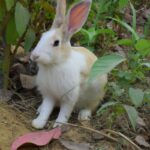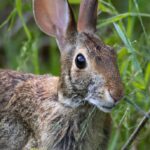Key Takeaways:
- Hunting rabbit is a popular activity in Connecticut.
- Connecticut offers a variety of hunting grounds for rabbit hunting enthusiasts.
- Hunters in Connecticut must adhere to specific regulations and licensing requirements when hunting rabbits.
- It is important for hunters to be mindful of safety precautions while rabbit hunting in Connecticut.
Are you ready to embark on an exhilarating adventure in the great outdoors?
If so, rabbit hunting in Connecticut might be just the thrill you’re looking for.
As an experienced hunter myself, I’ve discovered the secrets to successful rabbit hunting in this beautiful state.
In this article, I will share with you the best time and season to hunt, essential gear you’ll need, how to choose the perfect hunting spot, tracking and hunting techniques, and even how to prepare the delicious rabbit meat for a mouthwatering meal.
So grab your gear, sharpen your instincts, and let’s dive into the world of rabbit hunting in Connecticut!
Topic: | Hunting Rabbit in Connecticut |
Location: | Connecticut |
Game Season: | November 1 – January 31 |
Hunting License: | Required |
Bag Limit: | 5 rabbits per day |
Firearm Restrictions: | Shotguns with shot size 4-6, rifles .22 caliber or smaller |
Permitted Hunting Techniques: | Hunting with dogs, hunting with firearms |
Best Time and Season for Rabbit Hunting
Ideal time of day for rabbit hunting
The ideal time of day for rabbit hunting is during the early morning or late afternoon. This is when rabbits are most active, as they are crepuscular animals that are more active during the twilight hours.
During these times, the rabbits are more likely to be out feeding and moving around.
It’s important to note that hunting too early in the morning or too late in the evening may make it difficult to see the rabbits clearly due to low light conditions. Additionally, hunting during midday is not recommended as rabbits tend to seek shelter during the hottest parts of the day.
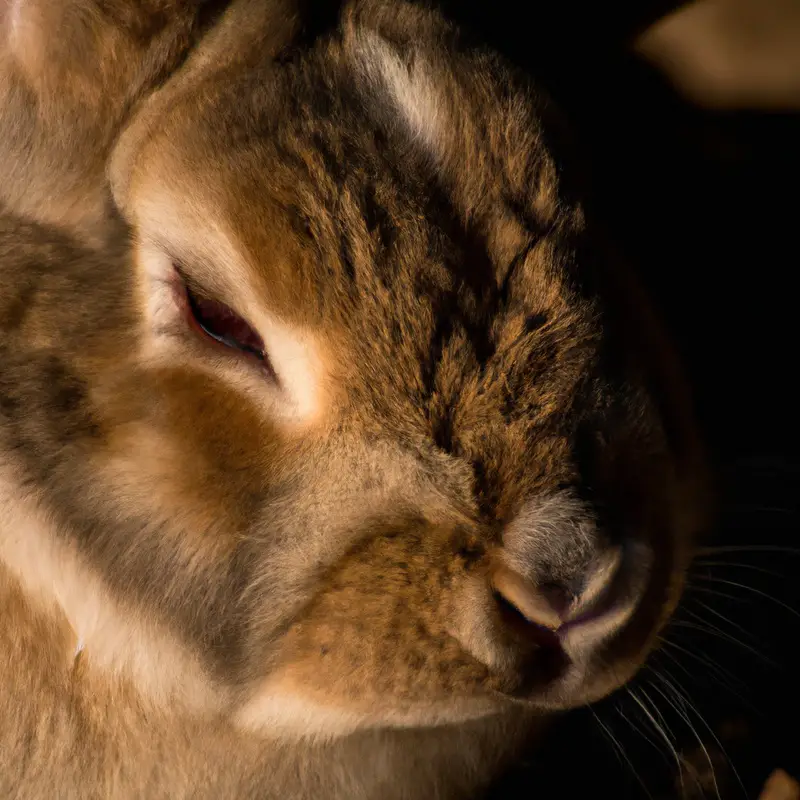
Best seasons for rabbit hunting in Connecticut
The best seasons for rabbit hunting in Connecticut are fall and winter. During the fall, rabbits are active and easy to spot due to the lack of vegetation.
Winter is also a great season, as rabbits tend to congregate in areas with heavy cover to stay warm.
Keep in mind that hunting regulations and licenses may vary, so be sure to check with local authorities. When planning your hunt, remember to dress appropriately for the weather and follow all safety guidelines.
Happy hunting!
Weather conditions to consider for successful rabbit hunting
To have a successful rabbit hunting trip, you need to consider the weather conditions. Here are some important factors to keep in mind:
- Temperature: Rabbits are more active during cooler temperatures, so hunting early in the morning or in the evening when it’s cooler can increase your chances of success.
- Wind: Wind can mask your scent and sound, making it harder for rabbits to detect your presence. A light breeze can be beneficial, but strong winds may make it challenging to spot and approach rabbits.
- Rain: Rain can make the ground muddy and noisy, making it difficult to move quietly. However, after rain showers, rabbits may be more active, taking advantage of the damp conditions to search for food.
- Snow: Hunting during snowy conditions can make it easier to spot rabbit tracks, improving your chances of finding a hotspot. However, heavy snowfall can also make it challenging to move through the terrain.
By considering these weather conditions during your hunting trip, you can increase your chances of having a successful rabbit hunt. Happy hunting!
Essential Gear for Rabbit Hunting in Connecticut
Hunting license and permits required
To go rabbit hunting in Connecticut, you will need a hunting license and the necessary permits.
A valid Connecticut hunting license is required for anyone over the age of 16.
Additionally, you will need a small game license specifically for hunting rabbits.
It’s important to note that there may be additional permits required depending on the specific location or season you plan to hunt in.
Make sure to check the regulations from the Connecticut Department of Energy and Environmental Protection for the most up-to-date information on licenses and permits needed.
Firearms and ammunition recommendations
For firearms, a 12-gauge shotgun is a popular choice for rabbit hunting in Connecticut.
It provides versatility and power, suitable for both close-range and longer shots.
A 20-gauge shotgun is also a good option, offering less recoil and a lighter weight.
As for ammunition, use No. 6 shot for rabbits.
It provides enough energy to take down a rabbit while minimizing damage to the meat.
Remember to adhere to local regulations and practice proper firearm safety at all times.
Happy hunting!
Clothing and footwear for rabbit hunting
When preparing for rabbit hunting, it’s important to wear the right clothing and footwear.
Opt for earth-tone colors that blend with the surroundings, such as brown or green.
Layering is key, as it allows you to adjust your clothing based on the temperature.
Choose moisture-wicking materials to stay dry and comfortable.
As for footwear, go for lightweight and waterproof boots with good traction.
They should provide ankle support and keep your feet warm in colder weather.
Don’t forget a hat and gloves for added protection!
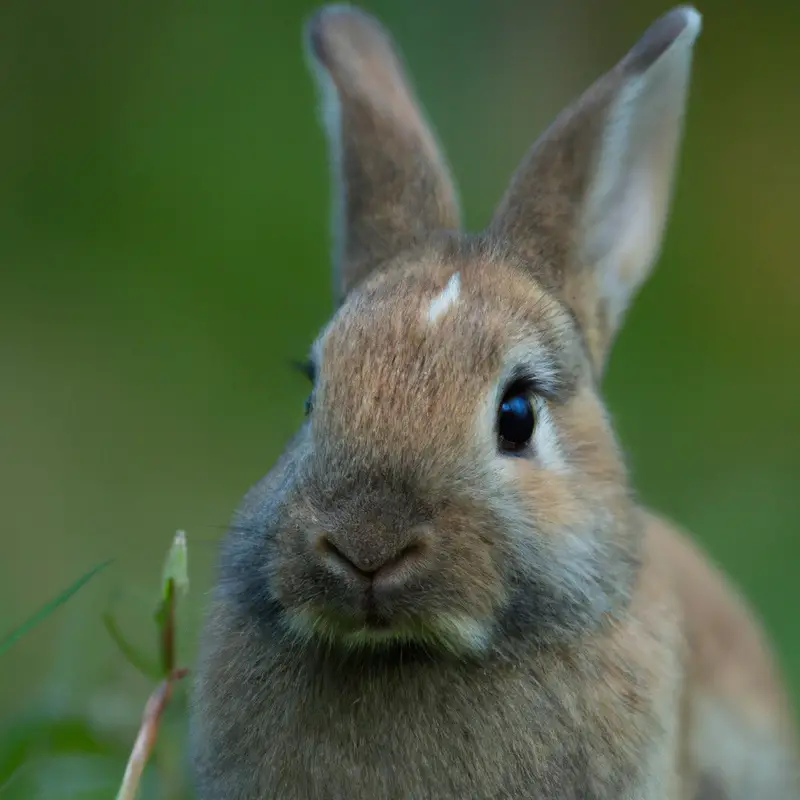
Additional gear and equipment for a successful hunt
To ensure a successful rabbit hunt in Connecticut, there are a few additional gear and equipment you should consider:
- Decoys: Using realistic rabbit decoys can help attract rabbits and increase your chances of a successful hunt. Place them strategically to lure the rabbits out of hiding.
- Camouflage clothing: Wearing appropriate camouflage clothing will help you blend into the surroundings and prevent rabbits from spotting you. Opt for patterns that match the local vegetation.
- Game calls: Having a good rabbit distress call can be highly effective in attracting curious rabbits. These calls mimic the sounds of a rabbit in distress and can entice them to come closer.
- Binoculars: A good pair of binoculars can be handy for scouting the area and spotting rabbits from a distance. Look for binoculars that offer clear optics and a comfortable grip.
- Game bags or backpack: Once you’ve successfully hunted a rabbit, having a game bag or backpack to carry your catch is essential. Look for ones that are durable and can securely hold the rabbits.
Remember to check local regulations and ensure that you have the appropriate licenses before heading out for a rabbit hunt.
Happy hunting!
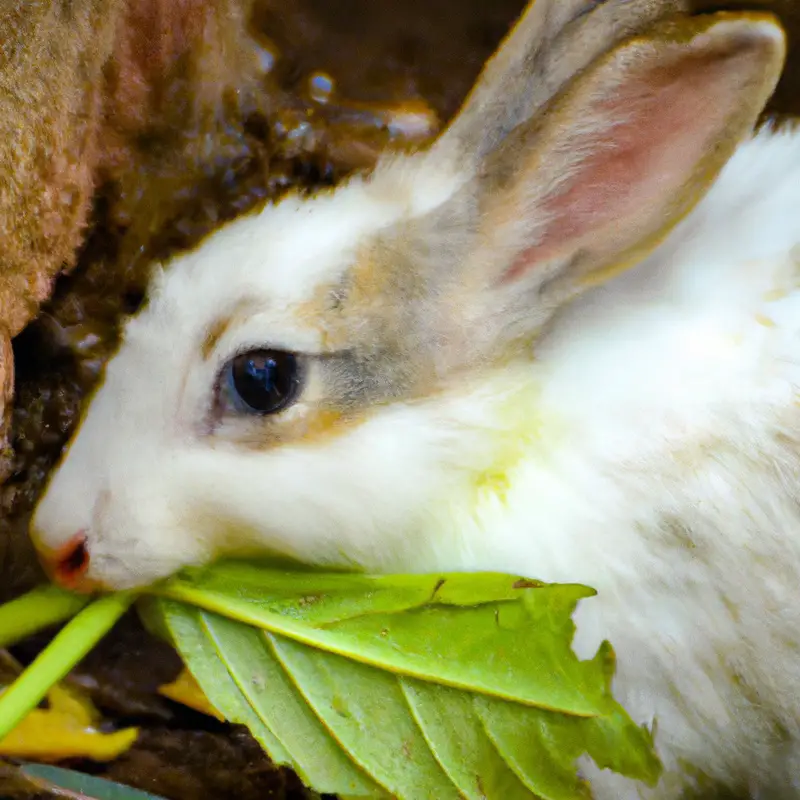
Choosing the Right Hunting Spot in Connecticut
Habitat preferences of rabbits in Connecticut
Rabbits in Connecticut prefer habitats with dense, low-lying vegetation, such as brush piles, shrubs, and tall grasses.
They are also commonly found in areas with abundant food sources, such as meadows, fields, and agricultural land.
Rabbits seek shelter and protection in thickets and areas with good cover, like wooded edges and hedgerows.
These small mammals are adaptable and can thrive in a variety of habitats, including forests and suburban areas.
They often create burrows in sandy or well-drained soil for nesting and safekeeping.
Public and private land options for rabbit hunting
When it comes to rabbit hunting in Connecticut, you have both public and private land options.
Public land such as state forests and wildlife management areas can be great choices, as they often offer hunting opportunities and may have specific areas designated for small game like rabbits.
Additionally, private landowners may allow hunting on their property, so it’s worth reaching out and asking for permission.
Just be sure to abide by any rules or regulations, get the necessary permits, and always prioritize safety while enjoying your hunt.
Scouting techniques for finding rabbit hotspots
When searching for rabbit hotspots, rely on these effective scouting techniques:
- Look for signs: Watch for rabbit tracks, droppings, chewed vegetation, and burrows. These indicate active rabbit populations.
- Study habitat preferences: Seek out areas with abundant cover, such as thickets, dense vegetation, or brush piles. Rabbits rely on these for protection and foraging.
- Focus on food sources: Look for spots with ample food supply, such as fields with clover, grasses, or shrubby plants.
- Consider time of day: Rabbits are most active during dawn and dusk. Scout during these periods for a better chance of encountering them.
Remember, these techniques can greatly enhance your rabbit hunting success.
Good luck out there!
Safety considerations when selecting a hunting spot
When selecting a hunting spot, there are a few important safety considerations to keep in mind. Firstly, always choose an area where it is legal to hunt and follow all local regulations.
Secondly, ensure that you are familiar with the terrain and any potential hazards such as steep cliffs or bodies of water.
Thirdly, be aware of any nearby properties or other hunters in the area to avoid conflicts or accidents. Finally, it is crucial to always wear bright, visible clothing and practice proper firearm safety.
Tracking and Hunting Techniques for Rabbits
Rabbit tracks and signs to look for
When tracking rabbits, there are several tracks and signs you can look for. Keep an eye out for distinctive rabbit footprints, which are usually small and oval-shaped.
Look for droppings as well, as rabbits leave plenty behind.
You may also come across nibbled vegetation and gnawed branches, indicating recent rabbit activity. Don’t forget to check for areas of flattened grass or brush, as rabbits often create small depressions to rest or hide in.
By paying attention to these tracks and signs, you’ll increase your chances of spotting and hunting rabbits successfully.
Effective stalking and still-hunting techniques
Effective stalking and still-hunting techniques involve being patient and observant while tracking rabbits. This requires moving slowly and quietly, using natural cover like trees and bushes to avoid detection.
Keep a low profile and use all your senses to detect any movement or sounds that might indicate the presence of a rabbit.
It’s important to scan the environment for signs such as tracks, droppings, or evidence of feeding. Pay attention to the wind direction to avoid giving away your scent.
Remember, practice and experience are key to becoming a successful stalker or still-hunter.
Using hunting dogs for rabbit hunting
Using hunting dogs for rabbit hunting can be an effective and exciting approach. Dogs with a strong prey drive, such as Beagles or Basset Hounds, are commonly used for this purpose.
These dogs have a keen sense of smell and can track the scent of rabbits.
Once they locate a rabbit, they will give chase, alerting you to the rabbit’s location. They can also help retrieve downed rabbits after the hunt.
Proper training and socialization are key to ensure they follow your commands and remain focused on the hunt.
Always ensure the safety of the dogs and follow local hunting regulations when using dogs for rabbit hunting.
Calling and decoy techniques for rabbit hunting
When it comes to rabbit hunting, calling and decoy techniques can be effective strategies. You can use a rabbit distress call to imitate the sound of a rabbit in distress, attracting nearby rabbits.
Another option is to use a predator call, such as a coyote or fox call, to mimic a natural predator and lure rabbits out into the open.
Decoys, such as a motion-activated rabbit decoy, can also be used to grab the attention of curious rabbits. Remember to practice these techniques responsibly and follow local hunting regulations.
Field Dressing and Preparing Rabbit Meat
Field dressing techniques for rabbits
Field dressing a rabbit is a simple process that can be done in a few steps:
- Start by laying the rabbit on its back and cutting a small incision just below the breastbone.
- Carefully insert your fingers into the incision and pull the skin away from the body.
- Use a sharp knife to make a circular cut around the base of each hind leg.
- Next, carefully peel the skin down towards the head, removing it completely. Be sure to remove any fur or debris.
- Once the skin is removed, you can remove the rabbit’s innards. Cut through the rib cage and use your hands to carefully remove the organs.
- Rinse the cavity with water to clean it out.
- Finally, you can trim off any excess fat, if desired, and the rabbit is ready to be cooked.
Remember to always handle game meat with clean hands and maintain proper hygiene throughout the dressing process.
Cleaning and preparing rabbit meat for cooking
Cleaning and preparing rabbit meat for cooking is a simple process that can be done in a few easy steps.
First, rinse the rabbit meat with cold water to remove any dirt or debris.
Next, pat the meat dry with paper towels.
Then, you can choose to marinate the meat for added flavor or proceed with seasoning it directly.
If you choose to marinate, allow the meat to sit in the marinade in the refrigerator for a few hours or overnight.
Finally, you can cook the rabbit meat using your preferred method, such as grilling, roasting, or stewing.
Enjoy your delicious rabbit meal!
Popular rabbit recipes and cooking methods
Popular rabbit recipes and cooking methods vary depending on personal taste and regional preferences. In some areas, rabbit is commonly stewed with vegetables and herbs for a comforting and hearty meal.
Others enjoy grilled rabbit, marinated in a flavorful sauce or seasoning.
Rabbit can also be fried, roasted, or used in casseroles and pies. For those looking to try something unique, rabbit can be used in ethnic dishes like rabbit curry or rabbit tacos.
Experimenting with different flavors and cooking techniques can bring out the best in this delicious and versatile meat.
Frequently Asked Questions about Rabbit Hunting in Connecticut
What is the bag limit for rabbits in Connecticut?
The bag limit for rabbits in Connecticut is six per day.
This means that you are legally allowed to harvest up to six rabbits in a single day while hunting in the state.
It’s important to abide by this bag limit to ensure sustainable hunting practices and to promote the conservation of rabbit populations.
Always check the specific regulations and licensing requirements in Connecticut before hunting rabbits to stay within the legal limits and contribute to responsible hunting.
Can I use traps or snares for rabbit hunting in Connecticut?
Yes, you can use traps or snares for rabbit hunting in Connecticut. However, there are specific regulations you need to follow.
- Traps must be labeled with the owner’s name and address.
- Snares must be checked at least once every 24 hours.
- You must possess a valid trapping license from the Connecticut Department of Energy and Environmental Protection.
- It is important to familiarize yourself with the specific rules and restrictions outlined in the Connecticut Hunting and Trapping Guide.
Remember, always prioritize the ethical and responsible treatment of animals while hunting and trapping.
Do I need a hunting dog to hunt rabbits in Connecticut?
No, you don’t need a hunting dog to hunt rabbits in Connecticut.
While some hunters use dogs to help track and retrieve rabbits, it is not a requirement.
Many hunters have success hunting rabbits without the assistance of a dog.
You can employ other hunting techniques such as still-hunting or stalking to locate and harvest rabbits.
It’s important to study their behaviors and habitats, and to be patient and alert during your hunt.
Good luck and happy hunting!
Are there any restrictions on hunting rabbits on public land?
Yes, there are restrictions on hunting rabbits on public land in Connecticut.
The Connecticut Department of Energy and Environmental Protection (DEEP) has specific regulations in place to protect wildlife and ensure responsible hunting practices.
Some common restrictions include hunting only during designated hunting seasons, obtaining the necessary hunting licenses and permits, and complying with bag limits and other regulations set by the DEEP.
It’s important to familiarize yourself with the specific hunting regulations in your area and follow them to ensure a safe and legal hunting experience.
What is the best time of year to hunt rabbits in Connecticut?
The best time to hunt rabbits in Connecticut is during the fall and winter months.
The cool temperatures and change in vegetation make it easier to spot and track rabbits.
Additionally, rabbits are more active during dawn and dusk, so hunting during these times can increase your chances of success.
Make sure to check the hunting regulations and obtain the necessary permits before heading out.
Happy hunting!
Final Verdict
Rabbit hunting in Connecticut can be an exhilarating and rewarding experience. By understanding the ideal time of day and best seasons for hunting, as well as considering weather conditions, hunters can increase their chances of success.
The right gear, including licenses and permits, firearms and ammunition, and appropriate clothing and footwear, is essential for a successful hunt.
Choosing the right hunting spot, understanding rabbit habitat preferences, and practicing effective tracking and hunting techniques are crucial for a fruitful outing. Finally, learning field dressing techniques and preparing rabbit meat for cooking allows hunters to enjoy the fruits of their labor.
Overall, rabbit hunting in Connecticut offers a unique and thrilling outdoor adventure for hunters of all levels of experience.



